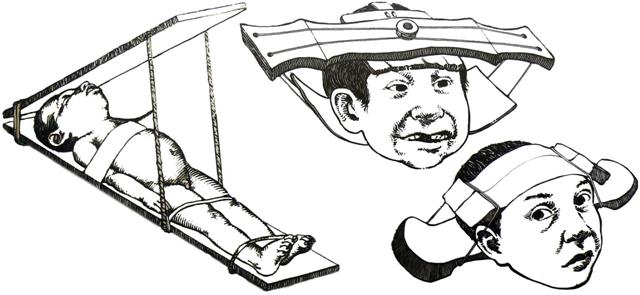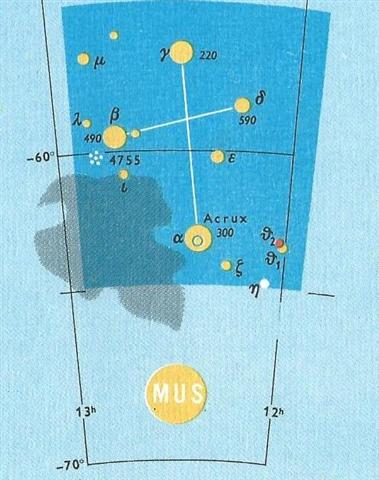274. Back to basics. Glyph 365 on the G tablet - which I early assumed was placed at the end of the year - is number 136 on side b, which I did not pay much attention to earlier. But I did notice that glyph 354 was a reversed hau tea and guessed it meant the end of a year to be counted as 12 *29½ days. The reversal of a glyph type was a strong Sign and especially so when it was preceded by a normally oriented glyph of the same sort:
Somewhat later, however, I concluded that the beginning of the text was not with Ga1-1 but at an empty (invisible) glyph position immediately before Ga1-1, which made Gb5-1 change its number to the day for the northern winter solstice (355, December 21). To avoid confusion I will put the glyph numbers in my tables at left when also this invisible first day has been counted: ... There are 471 glyphs on the tablet and each glyph represents a day. But the first day in the text is not represented by a glyph, because time flows and the first day cannot be incised in the wooden tablet before all its 24 hours have been measured out in full. It is like the signs for the hours on the face of an old-fashioned clock:
Gb5-12 was still number 136 counted from Gb1-1 but now no longer at day 365 but at day 366, which I interpreted as representing the day after day 365 (the Julian year measured 365¼ days) and possibly with a duration of only ¼ * 24 = 6 hours, i.e. with 24 - 6 = 18 hours (¾) belonging at the beginning of the next year - which would account for the compressed version of haga rave at left in the glyph:
The peculiar figure at right is not standing still looking at us (en face) but instead intent on moving a-head. And the pronounced back of his elongated skull
comes before his fluid foot 'calabash',
yet they are 'being' the same person: ... The state of the tree loomed large in their thoughts, because it came about at the same time the head of One Hunaphu was put in the fork. The Xibalbans said among themselves: 'No one is to pick the fruit, nor is anyone to go beneath the tree', they said. They restricted themselves, all of Xibalba held back. It isn't clear which is the head of One Hunaphu; now it's exactly the same as the fruit of the tree. Calabash came to be its name, and much was said about it ... And then she looked in her hand, she inspected it right away, but the bone's saliva wasn't in her hand. It is just a sign I have given you, my saliva, my spittle. This, my head, has nothing on it - just bone, nothing of meat. It's just the same with the head of a great lord: it's just the flesh that makes his face look good. And when he dies, people get frightened by his bones. After that, his son is like his saliva, his spittle, in his being, whether it be the son of a lord or the son of a craftsman, an orator. The father does not disappear, but goes on being fulfilled. Neither dimmed nor destroyed is the face of a lord, a warrior, craftsman, an orator. Rather, he will leave his daughters and sons. So it is that I have done likewise through you. Now go up there on the face of the earth; you will not die. Keep the word. So be it, said the head of One and Seven Hunaphu - they were of one mind when they did it ... ... Hala qaattsi ttakkin-gha, a voice said: 'Come inside, my grandson.' Behind the fire, at the rear of the house, was an old man white as a gull.
... In the deep night before the image [of Lono] is first seen, there is a Makahiki ceremony called 'splashing-water' (hi'uwai). Kepelino tells of sacred chiefs being carried to the water where the people in their finery are bathing; in the excitement created by the beauty of their attire, 'one person was attracted to another, and the result', says this convert to Catholicism, 'was by no means good'. At dawn, when the people emerged from their amorous sport, there standing on the beach was the image of Lono. White tapa cloth and skins of the ka'upu bird hang from the horizontal bar of the tall crosspiece image. The ka'upu is almost certainly the albatross, a migratory bird that appears in the western Hawaiian chain - the white Lanyon albatross at Ni'ihau Island - to breed and lay eggs in October-November, or the beginning of the Makahiki season ... 'I have something to lend you', said the old man. 'I have something to tell you as well. Dii hau dang iiji: I am you.' Slender bluegreen things with wings were moving between the screens at the back of the house. Waa'asing dang iiji, said the old man again: 'That also is you.' ...
The hau tea type of glyph ought to have visualized some kind of white (tea) light and its 'eye' ('face') in front (like a lantern for illuminating the path ahead) suddenly was no longer there, no longer of any help because the face had been forced to turn 180º around - there was no way a-head, the Sun had stopped.
Or better, and as Fornander implies, it was the White Goddess who had stopped - which is more in tune with the position of Easter Island far south of the equator in the night where only the Moon Queen (Venus) could possibly rule. 355 = 12 * 29½ + 1 and the New Moon face is dark: • ... Greek, θεος, m. θεα, f. god, goddess, divinity generally. In Greek, θεος signified no god in particular, but was applied to almost all the gods, though perhaps more often to the sun. As the first gods were the sun, moon, &c., their brilliancy and whiteness were the underlying sense of the names given them. That primary sense was apparently lost in the Greek and the other West Aryan branches, though in the Polynesian both the primary and derivative sense has been preserved, as in the Marqu. atea, both god and light, in the Tah. tapu-tea, the rainbow, and the Sam. tapu-i-tea, the evening star ... The dates at the time of the Bull show us that anciently this was not a year which was beginning at a solstice but rather it was beginning in the vigorous spring:
The synodic circuit of Saturn (the universal time giver) was 378 days and at the time of Bharani day 378 counted from 0h was at Gb5-1, because 366 + 91 = 377 ("April 1) and the ancient Roman calendar had a year with 377 days for recalibrating time:
... The ordinary year in the previous Roman calendar consisted of 12 months, for a total of 355 days. In addition, a 27-day intercalary month, the Mensis Intercalaris, was sometimes inserted between February and March. This intercalary month was formed by inserting 22 days after the first 23 or 24 days of February; the last five days of February, which counted down toward the start of March, became the last five days of Intercalaris. The net effect was to add 22 or 23 days to the year, forming an intercalary year of 377 or 378 days ... I think the calendar dates at the time when Bharani (Yoni, the female organ of reproduction) had been at 0h were used on Easter Island (rather than the dates at the time of the older and obviously male Bull),
and day 377 counted from 0h would then coincide with the stars which at the time of rongorongo had advanced 41 right ascension positions ahead to May 12 (418 = 132 + 366 = 377 + 41 = *377 + *41), which means that in the following day Acrux would have culminated at 21h:
|
|||||||||||||||||||||||||||||||||||||||||||||||||||||||||||||||||||||||||||||||||||||||||||||||||||||||||||||||||||||||||||||||||||||||||









